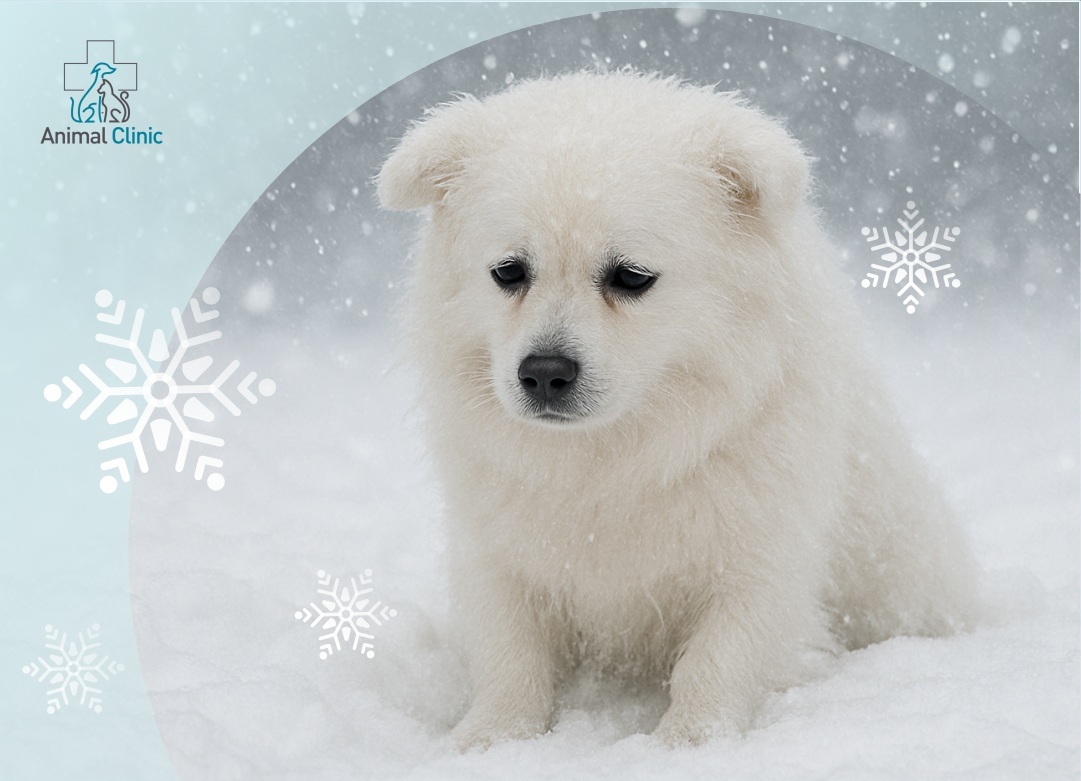- Main
- News and events
- Hypothermia and Colds in Pets
Hypothermia and Colds in Pets

During the cold season, pets can become hypothermic — not only outdoors in winter but even inside the home if there are drafts and the indoor temperature falls below 15°C (59°F). When a pet becomes chilled, their body temperature drops.
On the background of hypothermia, especially if the immune system is weakened, your pet may develop illness. What people commonly refer to as “a cold” may actually involve conditions such as calicivirus, herpesvirus (in cats), distemper (in dogs), adenovirus, parainfluenza, as well as bacterial and fungal infections.
In this article, Animal Clinic veterinarians explain the main signs of hypothermia and how to help a pet that has been exposed to cold for an extended period.
Symptoms You Should Never Ignore
A responsible and attentive pet parent will quickly notice when cold exposure has affected their pet. Behavior and vital signs change depending on the severity of hypothermia:
- Mild hypothermia — shivering, weakness, seeking warm places (under a blanket, into a closet, near a heater, etc.). At this stage, you can warm the pet by covering them.
- Progressing hypothermia — irregular breathing, minimal activity, low blood pressure. Place a warm (not hot) heating pad near the pet, ideally around 40°C (104°F). Offer warm (not hot) water to drink.
- Severe hypothermia — a dangerous condition in which the dog or cat has difficulty breathing, may lose consciousness, or slip into a coma. Body temperature may drop to 36°C (96.8°F) — compared to the normal range of 37.5–39°C for cats and 38–39.3°C for dogs. Muscles become stiff. In such cases, you must urgently bring the pet to one of our veterinary clinics in Kyiv or the Kyiv region.
Exposure to cold, wet fur, or lying in drafts may lead to symptoms of illness: fever, sneezing, coughing, inflamed mucous membranes, and clear or white nasal discharge.
If an ear is affected, the pet may scratch it or tilt their head. The pet becomes lethargic, may refuse food, but often drinks more water.
How to Safely Treat Runny Nose, Cough, and Laryngitis
The only safe and effective way to treat a pet’s “cold” is to bring them to a veterinarian for examination. Depending on diagnostic findings and the identified cause, a doctor may prescribe:
- Runny nose (rhinitis). Clear the nose of dried mucus. Use a cotton pad moistened with warm water to gently remove crusts. The vet may also recommend nasal rinsing with saline (2 drops into each nostril, 2–3 times a day).
- Cough. Treatment may include antibiotics, antiviral medications, mucolytics, or anti-inflammatory drugs.
- Laryngitis. If a bacterial infection is present, antibiotics may be prescribed. To reduce inflammation and discomfort, anti-inflammatory or pain-relief medications may be used.
Comfortable home conditions are essential for recovery. Maintain indoor temperatures at no less than 22°C (72°F).
If your pet isn’t drinking enough and shows little interest in dry food, offer wet food — but never cold from the refrigerator.
